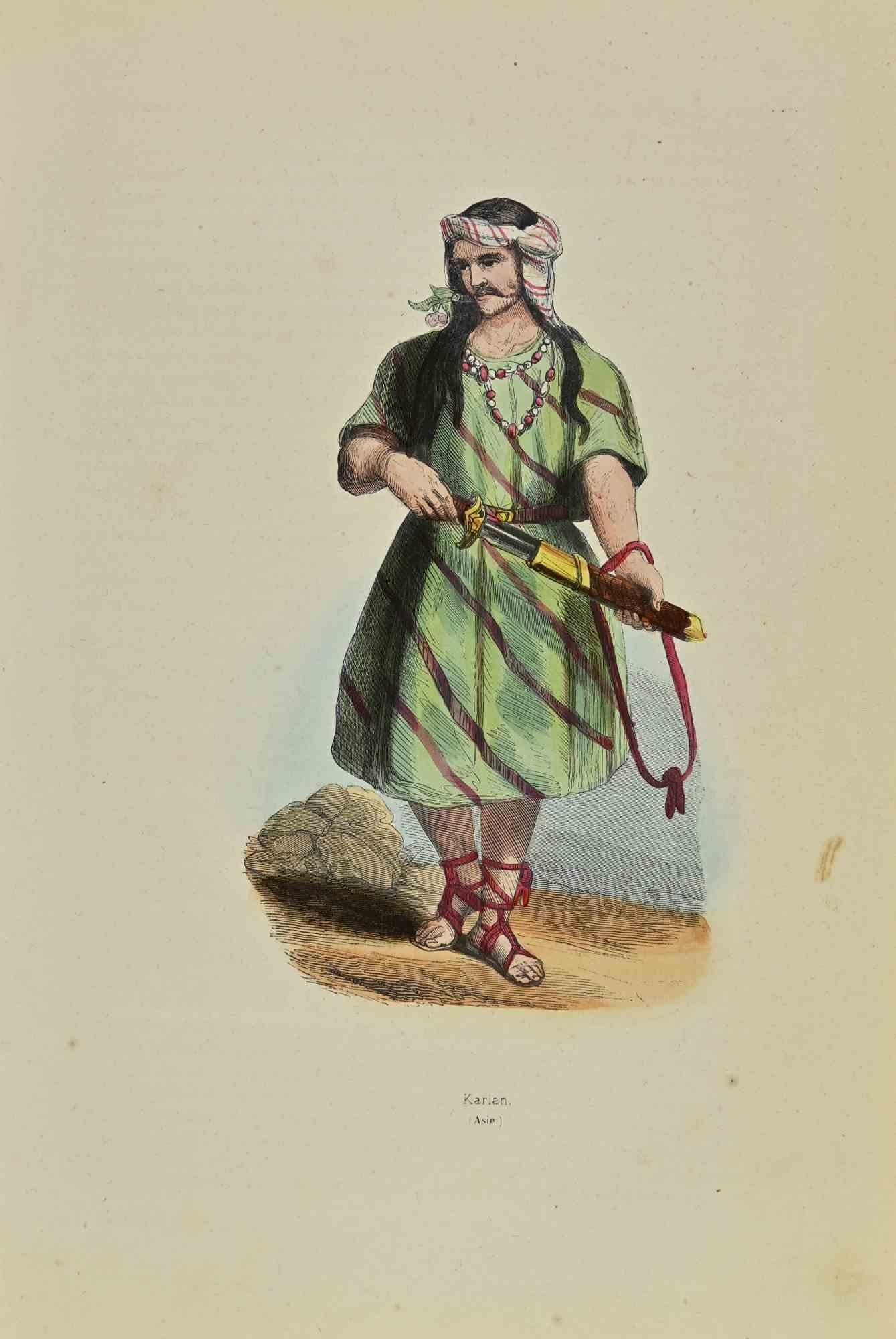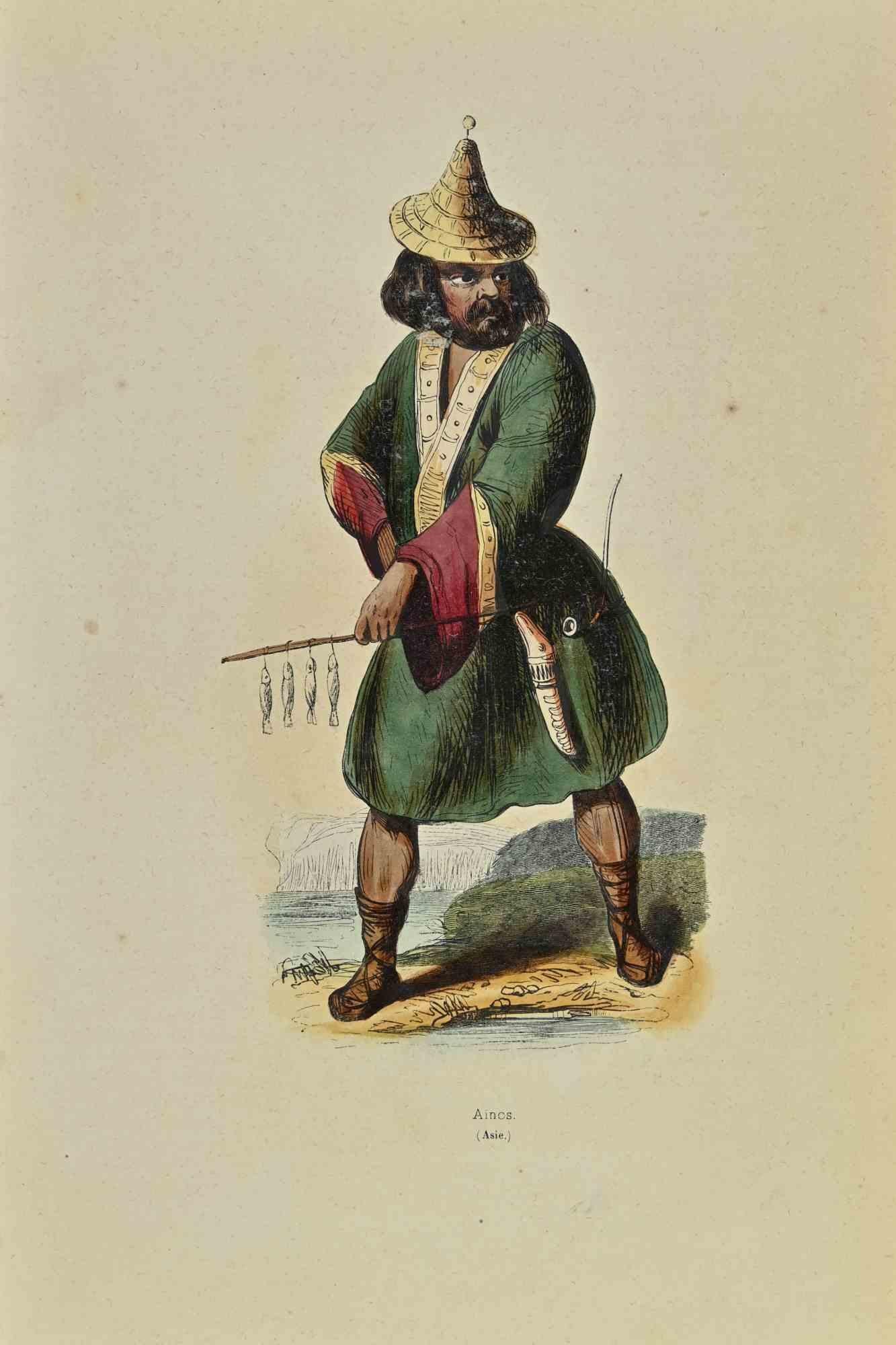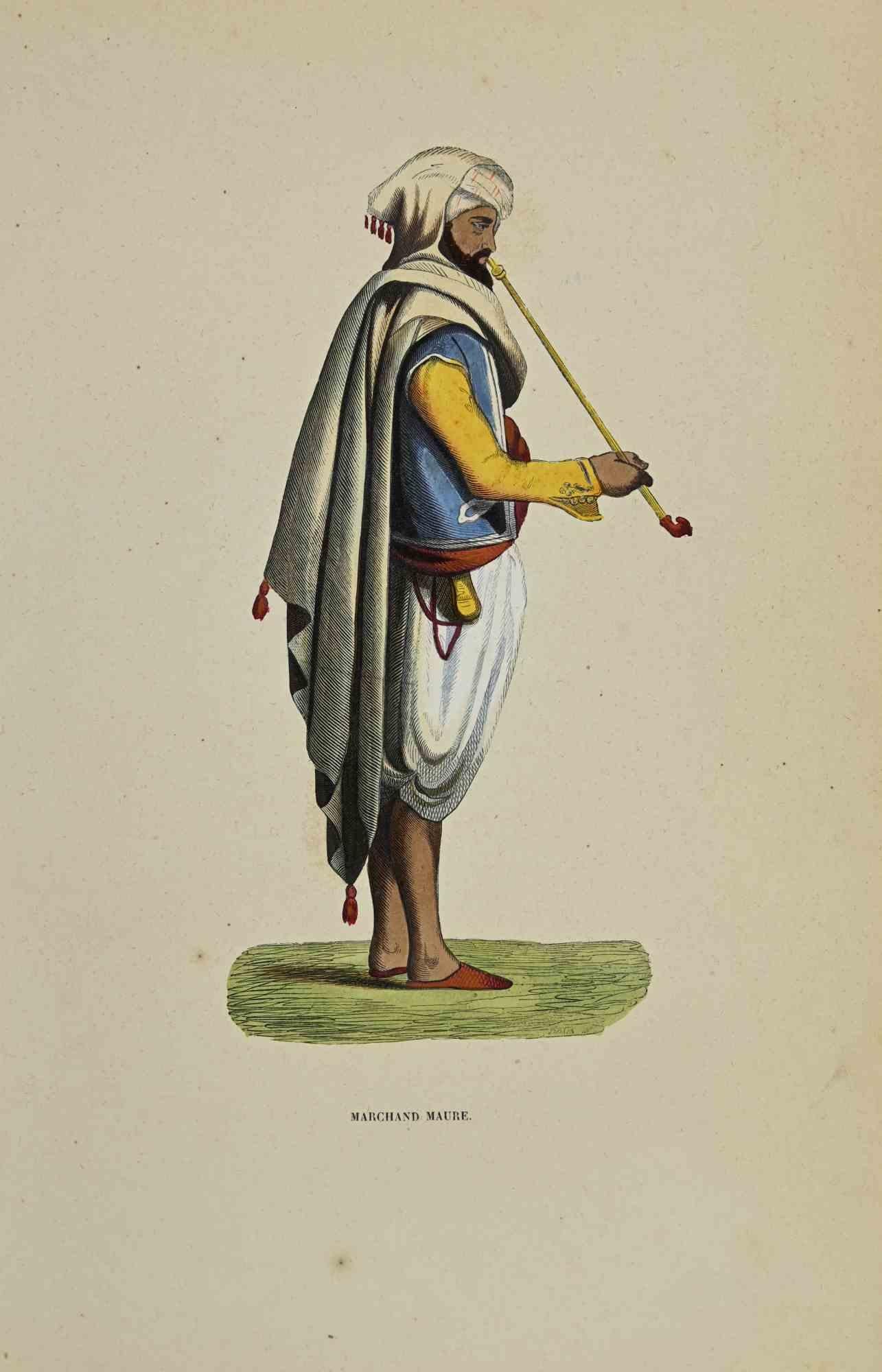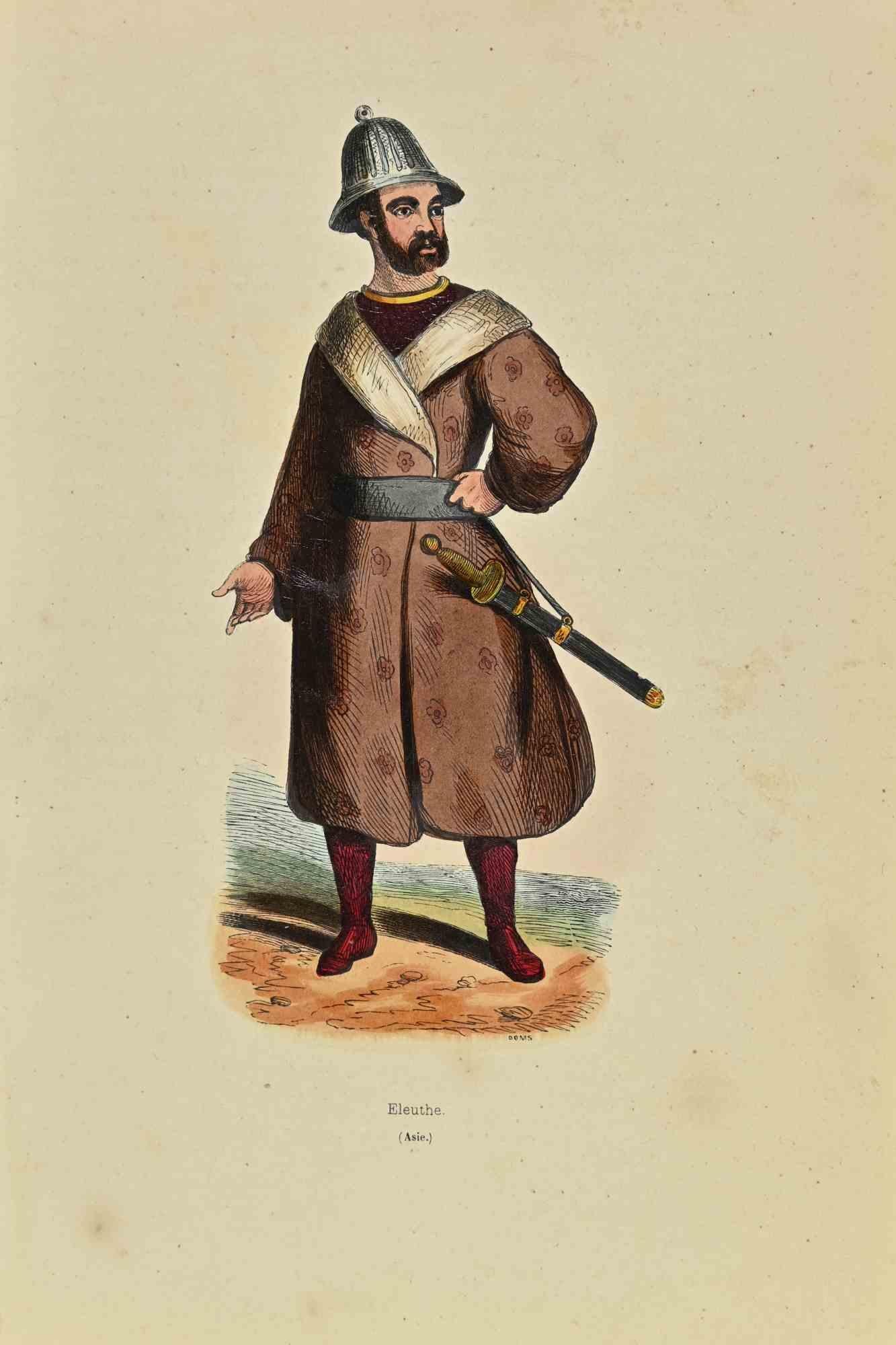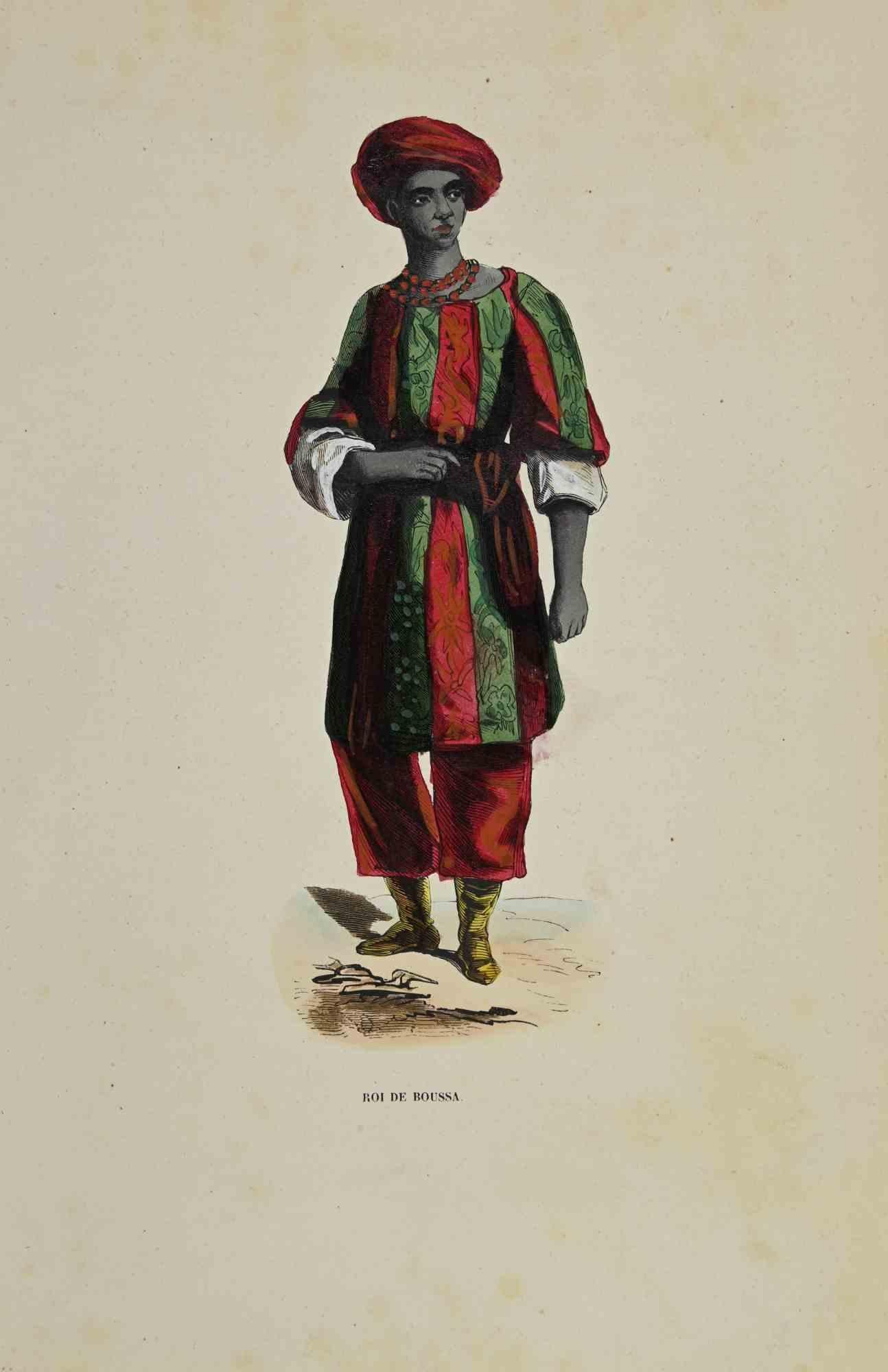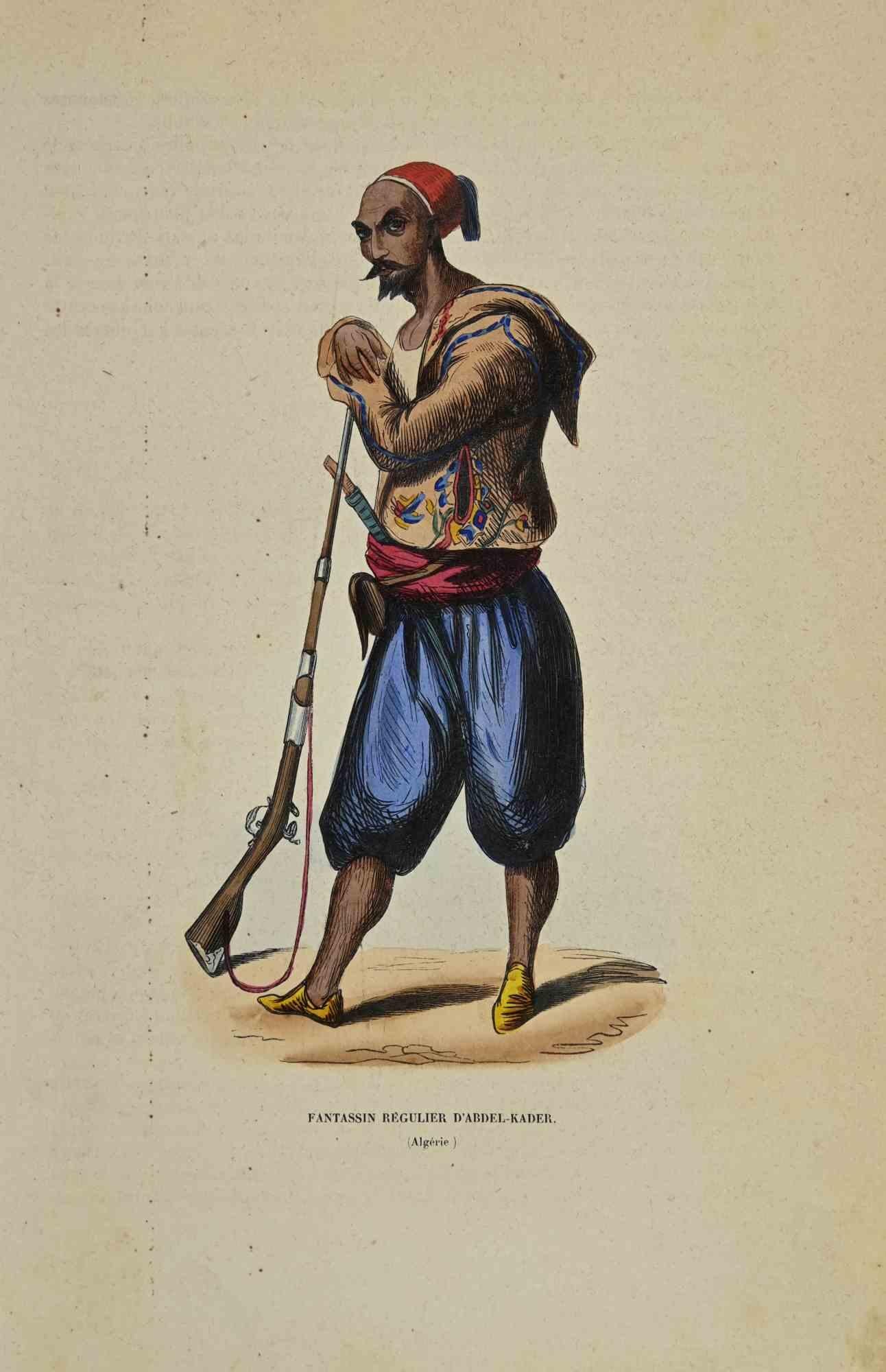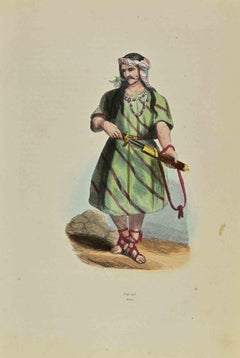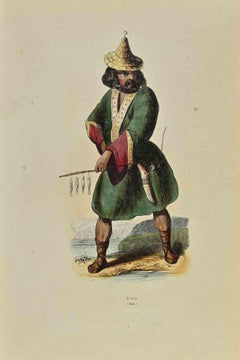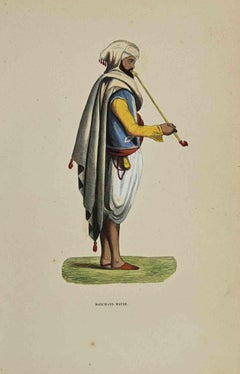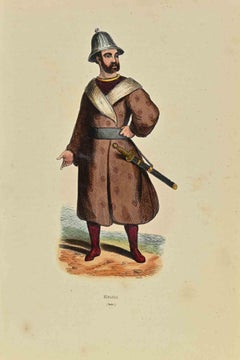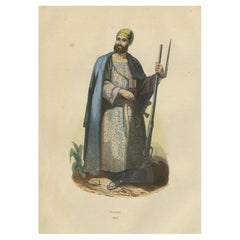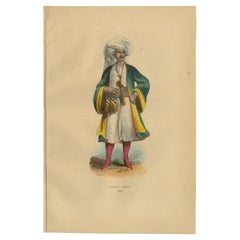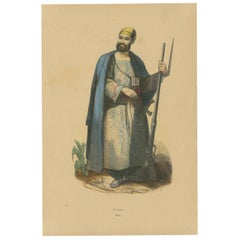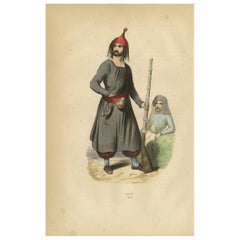Items Similar to Douran - Lithograph by Auguste Wahlen - 1844
Want more images or videos?
Request additional images or videos from the seller
1 of 2
Auguste WahlenDouran - Lithograph by Auguste Wahlen - 18441844
1844
$169.81
$261.2435% Off
£129.19
£198.7535% Off
€143
€22035% Off
CA$238.22
CA$366.4935% Off
A$259.94
A$399.9035% Off
CHF 134.48
CHF 206.9035% Off
MX$3,109.63
MX$4,784.0535% Off
NOK 1,698.85
NOK 2,613.6135% Off
SEK 1,595.19
SEK 2,454.1435% Off
DKK 1,089.31
DKK 1,675.8735% Off
About the Item
Douran is a lithograph made by Auguste Wahlen in 1844.
Hand colored.
Good condition.
At the center of the artwork is the original title "Douran".
The work is part of Suite Moeurs, usages et costumes de tous les peuples du monde, d'après des documents authentiques et les voyages les plus rècents.
- Creator:Auguste Wahlen
- Creation Year:1844
- Dimensions:Height: 9.85 in (25 cm)Width: 6.7 in (17 cm)Depth: 0.04 in (1 mm)
- Medium:
- Movement & Style:
- Period:
- Framing:Framing Options Available
- Condition:Insurance may be requested by customers as additional service, contact us for more information.
- Gallery Location:Roma, IT
- Reference Number:Seller: T-1438111stDibs: LU650313608212
About the Seller
4.9
Platinum Seller
Premium sellers with a 4.7+ rating and 24-hour response times
1stDibs seller since 2017
7,798 sales on 1stDibs
Typical response time: 1 hour
- ShippingRetrieving quote...Shipping from: Grasse, France
- Return Policy
More From This Seller
View AllKarian - Lithograph by Auguste Wahlen - 1844
Located in Roma, IT
Karian is a lithograph made by Auguste Wahlen in 1844.
Hand colored.
Good condition.
At the center of the artwork is the original title "Karian".
The work is part of Suite Moeurs...
Category
1840s Modern Figurative Prints
Materials
Lithograph
$169 Sale Price
35% Off
Ainos - Lithograph by Auguste Wahlen - 1844
Located in Roma, IT
Ainos is a lithograph made by Auguste Wahlen in 1844.
Hand colored.
Good condition.
At the center of the artwork is the original title "Ainos".
The work is part of Suite Moeurs, ...
Category
1840s Modern Figurative Prints
Materials
Lithograph
$142 Sale Price
40% Off
Marchand Maure - Lithograph by Auguste Wahlen - 1844
Located in Roma, IT
Marchand Maure is a hand colored lithographs realized by Auguste Wahlen in 1844.
Good conditions.
The artwork belongs to the Suite Moeurs, usages et costumes de tous les peuples du...
Category
1840s Modern Figurative Prints
Materials
Lithograph
$154 Sale Price
35% Off
Eleuthe - Lithograph by Auguste Wahlen - 1844
Located in Roma, IT
Eleuthe is a lithograph made by Auguste Wahlen in 1844.
Hand colored.
Good condition.
At the center of the artwork is the original title "Eleuthe".
The work is part of Suite Moeu...
Category
1840s Modern Figurative Prints
Materials
Lithograph
$154 Sale Price
35% Off
Roi de Boussa - Lithograph by Auguste Wahlen - 1844
Located in Roma, IT
Roi de Boussa is a hand colored lithographs realized by Auguste Wahlen in 1844.
Good conditions.
The artwork belongs to the Suite Moeurs, usages et costumes de tous les peuples du ...
Category
1840s Modern Figurative Prints
Materials
Lithograph
$154 Sale Price
35% Off
Fantassin Regulier d'Abdel Kader - Lithograph by Auguste Wahlen - 1844
Located in Roma, IT
Fantassin Regulier d'Abdel Kader is a hand colored lithographs realized by Auguste Wahlen in 1844.
Good conditions.
The artwork belongs to the Suite Moeurs, usages et costumes de t...
Category
1840s Modern Figurative Prints
Materials
Lithograph
You May Also Like
Antique Costume Print of an Arab 'Douran' with Weapons in Asia, 1843
Located in Langweer, NL
Antique costume print titled 'Douran (Asie)'.
Original antique print of an Arabian man. This print originates from 'Moeurs, usages et costumes de tous ...
Category
Antique 1840s Prints
Materials
Paper
$133 Sale Price
20% Off
1844 Lithograph of a Bukharan Uzbek: Traditional Attire and Craft
Located in Langweer, NL
"1844 Lithograph of a Bukharan Uzbek: Traditional Attire and Craft"
Description: This 1844 lithograph captures a traditional Bukharan Uzbek man, from the renowned series "Moeurs, Usages et Costumes de tous les Peuples de Monde" by Auguste Wahlen.
Published in Paris using the technique of handcoloured lithography, enhanced with Arabic gum on vellin paper, this print vividly portrays the rich cultural attire unique to Bukhara, Uzbekistan.
The man's elaborate robe and distinctive headwear highlight the regional fashion and craftsmanship. The print’s appeal lies in its detailed depiction of historical dress and accessories, offering a window into the cultural diversity of Central Asia. Such prints are treasured for their historical value and intricate artistry, making them highly desirable to collectors and enthusiasts of ethnographic art.
The lithograph depicting a man from Bukhara, Uzbekistan, offers several intriguing cultural and historical insights:
1. Traditional Attire: The attire of the Bukharan man, particularly the elaborate robe and turban, is a rich display of Uzbek textile craftsmanship. Traditional robes, often made from silk and cotton, are adorned with intricate ikat patterns—a dyeing technique where threads are dyed before weaving. This style is emblematic of Uzbekistan's well-known textile industry.
2. Turban Significance: The turban, known locally as a "doppa" or "tubeteika," is more than just practical headwear; it serves as a cultural symbol of status and identity. The style, color, and way it is worn can convey information about the wearer's social status, region, and even his clan affiliations.
3. Historical Context: Bukhara was a pivotal Silk Road city, making it a melting pot of cultures, languages, and religions. The diverse influences are reflected in the traditional clothing, which blends Persian, Turkic, and nomadic styles.
4. Artistic Technique: The use of handcoloured lithography in the 19th century allowed for high-quality, detailed prints that were more accessible to the European public. This technique involved drawing on limestone with a greasy medium, then using water and oil-based ink to print vibrant images, which were then painted by hand.
5. Cultural Preservation: Prints like this serve not only as artwork but also as historical documents that preserve and share the cultural heritage of regions less known to the Western world at the time. They played a crucial role in educating and influencing perceptions about distant cultures during the 19th century.
This print, therefore, is not just a beautiful piece of art but a deep well of cultural history and craftsmanship, reflecting the rich tapestry of life in Central Asia during the 19th century.
Keywords:
- Antique Uzbek prints
- Handcoloured lithography
- 19th-century Central Asian costumes
- Auguste Wahlen lithographs
- Traditional Bukharan attire
- Ethnographic art prints
- Collectible cultural lithographs
- Historical Uzbek fashion
- Asian historical prints
- Vintage Uzbek art...
Category
Antique 1840s Prints
Materials
Paper
$142 Sale Price
20% Off
Antique Costume Print of an Arabian Man by Wahlen '1843'
Located in Langweer, NL
Antique costume print titled 'Douran'. Original antique print of an Arabian man. This print originates from 'Moeurs, usages et costumes de tous les peuples...
Category
Antique Mid-19th Century Prints
Materials
Paper
$95 Sale Price
20% Off
Antique Print of a Kurd by Wahlen, 1843
Located in Langweer, NL
Antique costume print titled 'Kurde (Asie)'. Original antique print of a Kurd. This print originates from 'Moeurs, usages et costumes de tous les peuples du monde' by Auguste Wahlen.
Category
Antique Mid-19th Century Prints
Materials
Paper
$95 Sale Price
20% Off
Traditional Eleuth Warrior Attire in 1844 Hand-Colored Lithograph
Located in Langweer, NL
Title: "Traditional Eleuth Warrior Attire in 1844 Lithograph"
Description:
This hand-colored lithograph titled *Eleuthe* (Eleuth) portrays a man from the Eleuth tribe, a subgroup of the Oirat Mongols. The image is part of Auguste Wahlen's "Moeurs, Usages et Costumes de tous les Peuples de Monde" (Customs, Manners, and Dress of All the Peoples of the World), published in 1844.
The print was created by an anonymous engraver after Wahlen's designs, with notable contributions from artists such as Evrard Duverger, L. Markaert, and R. King. The lithograph is enhanced with Arabic gum on vellum paper, adding a bright gloss and deepening the colors.
Notable Features of the Attire:
- Helmet: The warrior wears a distinctive helmet, possibly crafted from metal or leather, which suggests a readiness for battle. The helmet design is typical of Mongolian and Central Asian tribes, providing protection while maintaining mobility.
- Coat: The long, fur-lined coat is characteristic of the Eleuths, suited to the cold climates of Central Asia. The coat is intricately patterned, showcasing both practicality and status.
- Sword: The sword hanging by his side is a symbol of his warrior class. The hilt appears to be ornately decorated, hinting at a higher social rank or experience in battle.
Cultural and Historical Insight:
The Eleuth people were part of the broader Oirat confederation of nomadic Mongols who lived in what is now Xinjiang and parts of Central Asia. Their warrior culture was highly developed, and this lithograph captures the essence of a soldier's dress during the 19th century. The attire shown here reflects both the harsh environment and the martial lifestyle that characterized their existence.
Keywords for Searching:
People searching for prints like this might use terms such as "Eleuth warrior lithograph," "Wahlen 1844 Mongolian print...
Category
Antique 1840s Prints
Materials
Paper
$114 Sale Price
20% Off
Antique Print of a Yakut by Wahlen, '1843'
Located in Langweer, NL
Antique costume print titled 'Yakute'. Original antique print of a Yakut. This print originates from 'Moeurs, usages et costumes de tous les peuples du monde' by Auguste Wahlen.
Category
Antique Mid-19th Century Prints
Materials
Paper
$95 Sale Price
20% Off
More Ways To Browse
Rockwell Kent Woodcut
Saint Laurent Lulu
Salvador Dali Cavaliers
Salvador Dali Heaven
Salvador Dali Hell
Salvador Dali Numbered Prints
Salvador Dali Song Songs Of Solomons
Saul Steinberg Galerie Maeght
Takashi Murakami Panda
The Accordion Player
Tiepolo Etching
Toulouse Lautrec Elles
Utagawa Kunisada (Toyokuni III) On Sale
Van Dyck Etching
Vaso Antico
Vintage Bus Stop Sign
Vintage Television Cameras
Vintage Wizard Art
